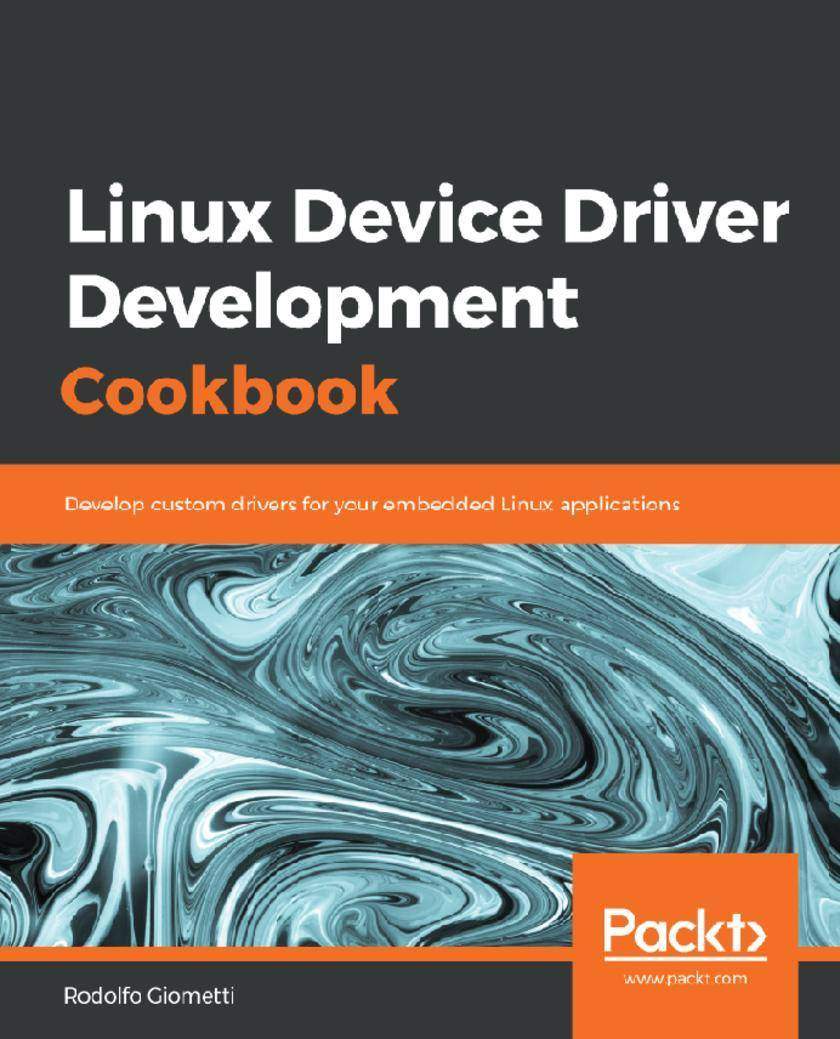
Linux Device Driver Development Cookbook
¥70.84
Over 30 recipes to develop custom drivers for your embedded Linux applications. Key Features * Use Kernel facilities to develop powerful drivers * Via a practical approach, learn core concepts of developing device drivers * Program a custom character device to get access to kernel internals Book Description Linux is a unified kernel that is widely used to develop embedded systems. As Linux has turned out to be one of the most popular operating systems used, the interest in developing proprietary device drivers has also increased. Device drivers play a critical role in how the system performs and ensures that the device works in the manner intended. By offering several examples on the development of character devices and how to use other kernel internals, such as interrupts, kernel timers, and wait queue, as well as how to manage a device tree, you will be able to add proper management for custom peripherals to your embedded system. You will begin by installing the Linux kernel and then configuring it. Once you have installed the system, you will learn to use the different kernel features and the character drivers. You will also cover interrupts in-depth and how you can manage them. Later, you will get into the kernel internals required for developing applications. Next, you will implement advanced character drivers and also become an expert in writing important Linux device drivers. By the end of the book, you will be able to easily write a custom character driver and kernel code as per your requirements. What you will learn * Become familiar with the latest kernel releases (4.19+/5.x) running on the ESPRESSObin devkit, an ARM 64-bit machine * Download, configure, modify, and build kernel sources * Add and remove a device driver or a module from the kernel * Master kernel programming * Understand how to implement character drivers to manage different kinds of computer peripherals * Become well versed with kernel helper functions and objects that can be used to build kernel applications * Acquire a knowledge of in-depth concepts to manage custom hardware with Linux from both the kernel and user space Who this book is for This book will help anyone who wants to develop their own Linux device drivers for embedded systems. Having basic hand-on with Linux operating system and embedded concepts is necessary.
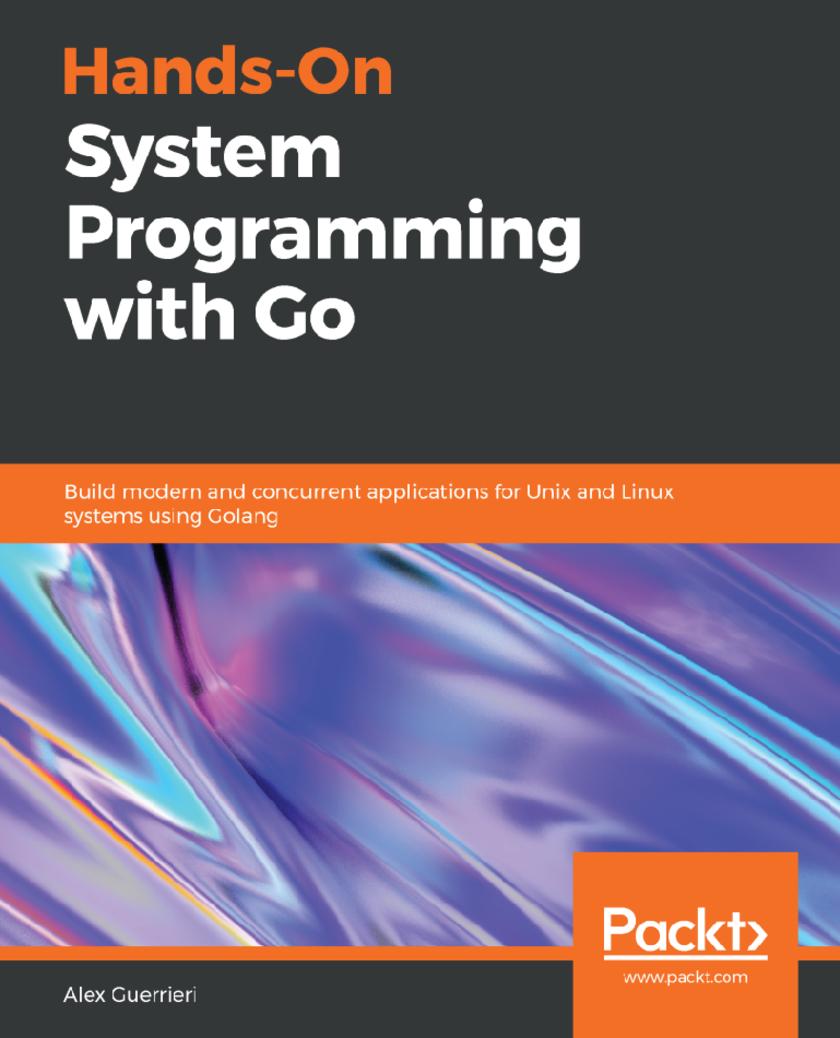
Hands-On System Programming with Go
¥70.84
Explore the fundamentals of systems programming starting from kernel API and filesystem to network programming and process communications Key Features * Learn how to write Unix and Linux system code in Golang v1.12 * Perform inter-process communication using pipes, message queues, shared memory, and semaphores * Explore modern Go features such as goroutines and channels that facilitate systems programming Book Description System software and applications were largely created using low-level languages such as C or C++. Go is a modern language that combines simplicity, concurrency, and performance, making it a good alternative for building system applications for Linux and macOS. This Go book introduces Unix and systems programming to help you understand the components the OS has to offer, ranging from the kernel API to the filesystem, and familiarize yourself with Go and its specifications. You'll also learn how to optimize input and output operations with files and streams of data, which are useful tools in building pseudo terminal applications. You'll gain insights into how processes communicate with each other, and learn about processes and daemon control using signals, pipes, and exit codes. This book will also enable you to understand how to use network communication using various protocols, including TCP and HTTP. As you advance, you'll focus on Go's best feature-concurrency helping you handle communication with channels and goroutines, other concurrency tools to synchronize shared resources, and the context package to write elegant applications. By the end of this book, you will have learned how to build concurrent system applications using Go What you will learn * Explore concepts of system programming using Go and concurrency * Gain insights into Golang's internals, memory models and allocation * Familiarize yourself with the filesystem and IO streams in general * Handle and control processes and daemons' lifetime via signals and pipes * Communicate with other applications effectively using a network * Use various encoding formats to serialize complex data structures * Become well-versed in concurrency with channels, goroutines, and sync * Use concurrency patterns to build robust and performant system applications Who this book is for If you are a developer who wants to learn system programming with Go, this book is for you. Although no knowledge of Unix and Linux system programming is necessary, intermediate knowledge of Go will help you understand the concepts covered in the book
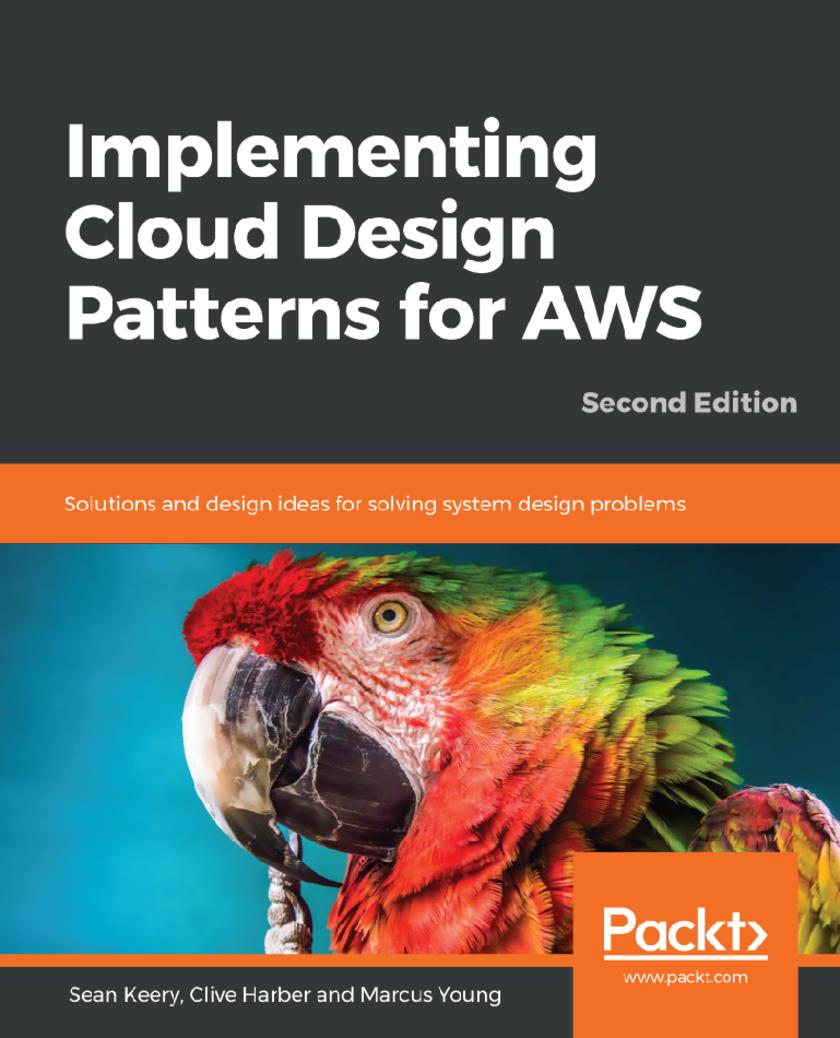
Implementing Cloud Design Patterns for AWS
¥70.84
Create highly efficient design patterns for scalability, redundancy, and high availability in the AWS Cloud Key Features * Build highly robust systems using the cloud infrastructure * Make web applications resilient against scheduled and accidental downtime * Explore and apply Amazon-provided services in unique ways to solve common design problems Book Description Whether you're just getting your feet wet in cloud infrastructure or already creating complex systems, this book will guide you through using the patterns to fit your system needs. Starting with patterns that cover basic processes such as source control and infrastructure-as-code, the book goes on to introduce cloud security practices. You'll then cover patterns of availability and scalability and get acquainted with the ephemeral nature of cloud environments. You'll also explore advanced DevOps patterns in operations and maintenance, before focusing on virtualization patterns such as containerization and serverless computing. In the final leg of your journey, this book will delve into data persistence and visualization patterns. You'll get to grips with architectures for processing static and dynamic data, as well as practices for managing streaming data. By the end of this book, you will be able to design applications that are tolerant of underlying hardware failures, resilient against an unexpected influx of data, and easy to manage and replicate. What you will learn * Implement scaling policies on schedules, influxes in traffic, and deep health checks * Make complete use of highly available and redundant storage * Design content delivery networks to improve user experience * Optimize databases through caching and sharding * Apply patterns to solve common problems * Implement repeatable processes for deploying systems Who this book is for If you’re an architect, solution provider, or DevOps community member looking to implement repeatable patterns for deploying and maintaining services in the Amazon cloud infrastructure, this book is for you. You’ll need prior experience of using AWS understand key concepts covered in the book, as it focuses on the patterns rather than the basics of using AWS.

OpenCV 4 for Secret Agents
¥70.84
Turn futuristic ideas about computer vision and machine learning into demonstrations that are both functional and entertaining Key Features * Build OpenCV 4 apps with Python 2 and 3 on desktops and Raspberry Pi, Java on Android, and C# in Unity * Detect, classify, recognize, and measure real-world objects in real-time * Work with images from diverse sources, including the web, research datasets, and various cameras Book Description OpenCV 4 is a collection of image processing functions and computer vision algorithms. It is open source, supports many programming languages and platforms, and is fast enough for many real-time applications. With this handy library, you’ll be able to build a variety of impressive gadgets. OpenCV 4 for Secret Agents features a broad selection of projects based on computer vision, machine learning, and several application frameworks. To enable you to build apps for diverse desktop systems and Raspberry Pi, the book supports multiple Python versions, from 2.7 to 3.7. For Android app development, the book also supports Java in Android Studio, and C# in the Unity game engine. Taking inspiration from the world of James Bond, this book will add a touch of adventure and computer vision to your daily routine. You’ll be able to protect your home and car with intelligent camera systems that analyze obstacles, people, and even cats. In addition to this, you’ll also learn how to train a search engine to praise or criticize the images that it finds, and build a mobile app that speaks to you and responds to your body language. By the end of this book, you will be equipped with the knowledge you need to advance your skills as an app developer and a computer vision specialist. What you will learn * Detect motion and recognize gestures to control a smartphone game * Detect car headlights and estimate their distance * Detect and recognize human and cat faces to trigger an alarm * Amplify motion in a real-time video to show heartbeats and breaths * Make a physics simulation that detects shapes in a real-world drawing * Build OpenCV 4 projects in Python 3 for desktops and Raspberry Pi * Develop OpenCV 4 Android applications in Android Studio and Unity Who this book is for If you are an experienced software developer who is new to computer vision or machine learning, and wants to study these topics through creative projects, then this book is for you. The book will also help existing OpenCV users who want upgrade their projects to OpenCV 4 and new versions of other libraries, languages, tools, and operating systems. General familiarity with object-oriented programming, application development, and usage of operating systems (OS), developer tools, and the command line is required.
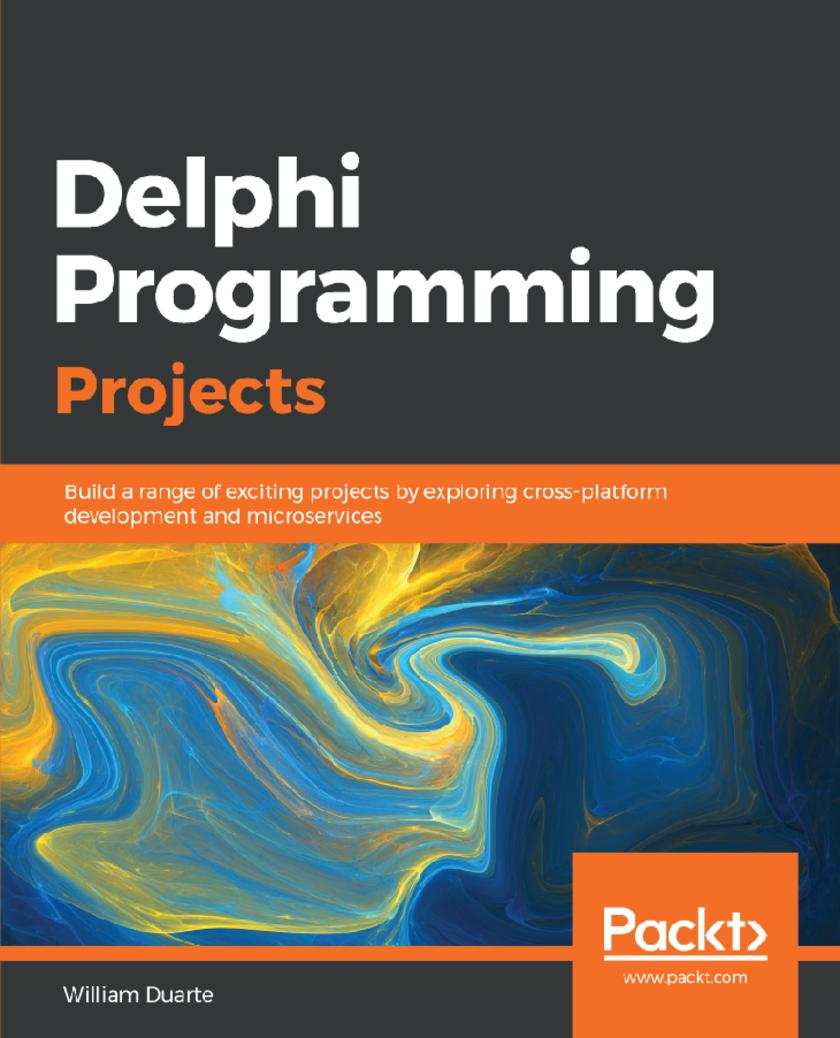
Delphi Programming Projects
¥70.84
Improve your Delphi programming skills by building robust applications for Android, iOS, and Windows platform Key Features * Build responsive user interfaces (UIs) for desktop and mobile with FireMonkey * Implement a microservices architecture using the Rapid Application Development(RAD) server * Create clones of popular applications like Instagram and Facebook using Delphi 10.3 Book Description Delphi is a cross-platform programming language and software development kit that supports rapid application development for Microsoft Windows, Apple Mac OS X, Android, and iOS. With the help of seven practical projects, this book will guide you through the best practices, Delphi Run-Time Library (RTL) resources, and design patterns. Whether you use the Visual Component Library (VCL) or FireMonkey (FMX) framework, these design patterns will be implemented in the same way in Delphi, using Object Pascal. In the first few chapters, you will explore advanced features that will help you build rich applications using the same code base for both mobile and desktop projects. In addition to this, you’ll learn how to implement microservice architecture in Delphi. As you get familiar with the various aspects of Delphi, you will no longer need to maintain source code for similar projects, program business rules on screens, or fill your forms with data access components. By the end of this book, you will have gained an understanding of the principles of clean code and become proficient in building robust and scalable applications in Delphi. What you will learn * Get to grips with the advanced features of RTL * Understand how to deal with the paradigm change between multiplatform projects * Build rich interfaces with Google's Material Design features * Understand how to implement design patterns in Delphi * Turn a mobile device into a remote controller with app tethering technology * Build a multi-database system using VCL Who this book is for This book is for developers, programmers, and IT professionals who want to learn the best market practices by implementing practical projects. Prior knowledge of the Delphi language is a must.
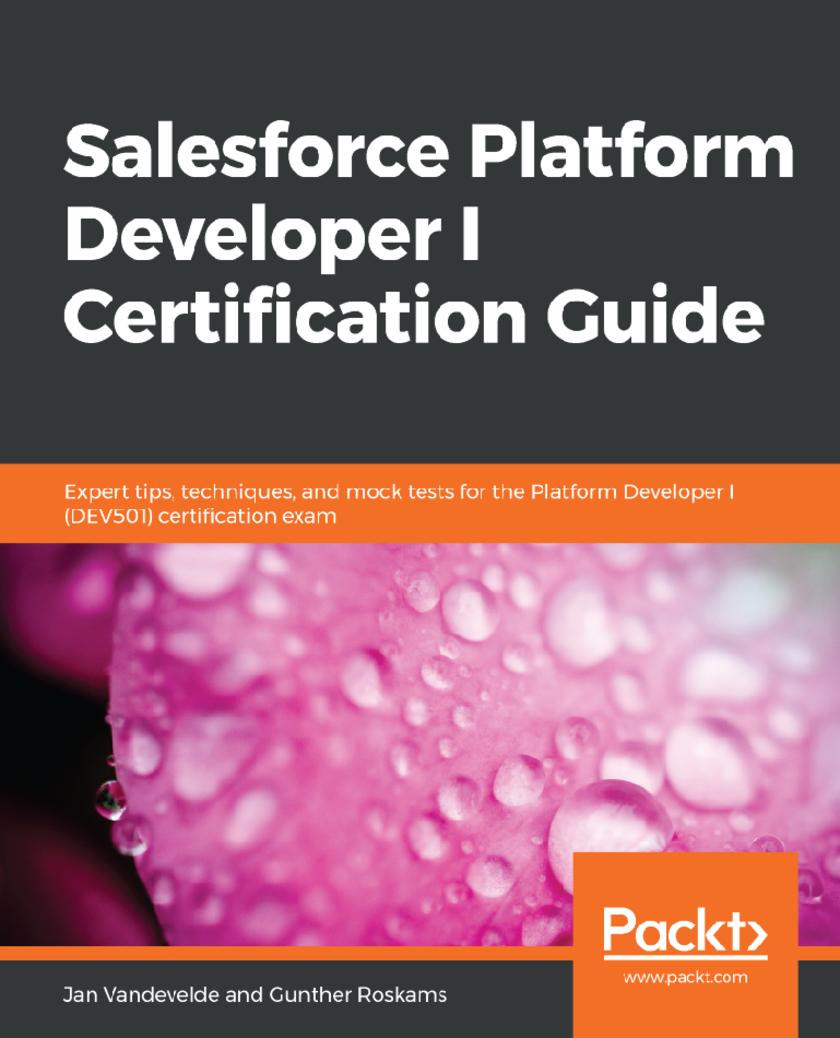
Salesforce Platform Developer I Certification Guide
¥70.84
Build and deploy scalable applications on the Salesforce Lightning Platform using the latest features of Spring '19 Key Features * An end-to end-guide with practice tests to help you achieve the Salesforce Platform Developer certification * Design data models, user interfaces, and business logic for your custom applications * Understand the complete development life cycle from designing to testing Book Description Salesforce Lightning Platform, used to build enterprise apps, is being increasingly adopted by admins, business analysts, consultants, architects, and especially developers. With this Salesforce certification, you'll be able to enhance your development skills and become a valuable member of your organization. This certification guide is designed to be completely aligned with the official exam study guide for the latest Salesforce Certified Platform Developer I release and includes updates from Spring '19. Starting with Salesforce fundamentals and performing data modeling and management, you’ll progress to automating logic and processes and working on user interfaces with Salesforce components. Finally, you'll learn how to work with testing frameworks, perform debugging, and deploy metadata, and get to grips with useful tips and tricks. Each chapter concludes with sample questions that are commonly found in the exam, and the book wraps up with mock tests to help you prepare for the DEV501 certification exam. By the end of the book, you’ll be ready to take the exam and earn your Salesforce Certified Platform Developer I certification. What you will learn * Solve sample questions and mock tests and work with exam patterns * Gain an understanding of declarative Salesforce tools such as Process Builder, flows, and many more * Code in Salesforce using the Developer Console and IDEs * Grasp the basics of object-oriented programming * Write Apex classes, Visualforce pages, and Apex test classes with easy-to-follow steps * Explore the different deployment tools that you can use to push metadata to different environments * Build custom declarative apps and programs on Force.com platforms Who this book is for The Salesforce Platform Developer I Certification Guide is for you if you want to learn how to develop and deploy business logic and user interfaces using the capabilities of the Lightning Platform. No prior knowledge of Apex programming is required.

Unreal Engine 4 Shaders and Effects Cookbook
¥70.84
Build optimized, efficient, and real-time applications that are production-ready using Unreal Engine's Material Editor Key Features * Create stunning visual effects for 3D games and high-quality graphics * Design efficient Shaders for mobile platforms without sacrificing their realism * Discover what goes into the structure of Shaders and why lighting works the way it does Book Description Unreal Engine 4 is a powerful game engine, one which has seen a recent boost in widespread adoption thanks to its ease of use and the powerful rendering pipeline that it packs. Seeing as how it's relatively easy to create stunning presentations and visuals, Unreal has quickly become a strong contender in industries where this kind of software had been previously denied entry. With that in mind, this book aims to help you get the most out of Unreal Engine 4 - from creating awe-inspiring graphics to delivering optimized experiences to your users. This is possible thanks to a mixture of hands-on experience with real materials and the theory behind them. You will immediately know how to create that material that you want to display, and you'll also end up with the knowledge that will let you know how to control it. All of this will be done without losing sight of two key components of any real-time application - optimization, and efficiency. The materials that you create will be light and efficient, and they will vary depending on your target platform. You'll know which techniques can be used in any kind of device and which ones should be kept to high-end machines, giving you the confidence to tackle any material-related task that you can imagine. Hop onboard and discover how! What you will learn * Master Unreal Engine's rendering pipeline for developing real-time graphics * Use physically based rendering (PBR) for building materials and lighting solutions * Build optimized materials for games targeting multiple platforms * Understand Unreal Engine's node and functions for creating desirable effects * Design and build production-ready shaders * Explore Unreal Engine's Material Editor for building complex materials and textures Who this book is for This book is for developers who want to create their first Shaders in Unreal Engine 4 or wish to take their game to a whole new level by adding professional post-processing effects. A solid understanding of Unreal is required to get the most from this book.
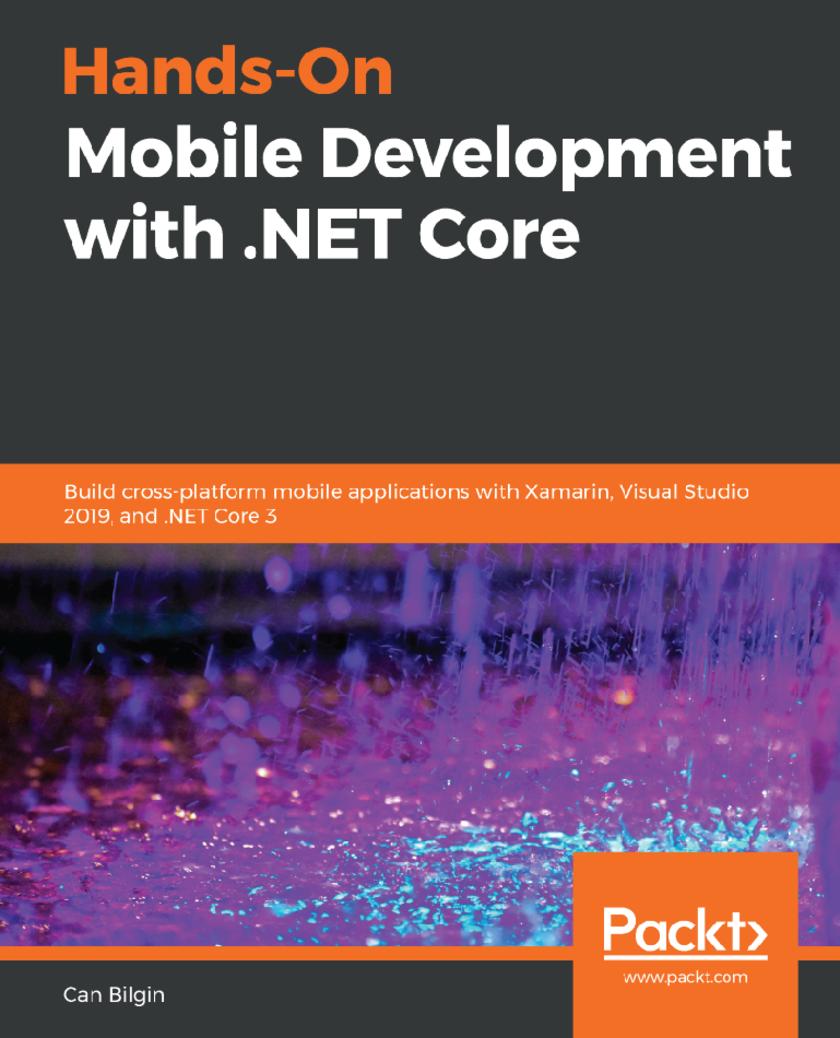
Hands-On Mobile Development with .NET Core
¥70.84
Develop native applications for multiple mobile and desktop platforms including but not limited to iOS, Android, and UWP with the Xamarin framework and Xamarin.Forms Key Features * Understand .NET Core and its cross-platform development philosophy * Build Android, iOS, and Windows mobile applications with C#, .NET Core, and Azure Cloud Services * Bring Artificial Intelligence capabilities into your mobile applications with Azure AI Book Description .NET Core is the general umbrella term used for Microsoft’s cross-platform toolset. Xamarin used for developing mobile applications, is one of the app model implementations for .NET Core infrastructure. In this book, you will learn how to design, architect, and develop highly attractive, maintainable, efficient, and robust mobile applications for multiple platforms, including iOS, Android, and UWP, with the toolset provided by Microsoft using Xamarin, .NET Core, and Azure Cloud Services. This book will take you through various phases of application development with Xamarin, from environment setup, design, and architecture to publishing, using real-world scenarios. Throughout the book, you will learn how to develop mobile apps using Xamarin, Xamarin.Forms and .NET Standard; implement a webbased backend composed of microservices with .NET Core using various Azure services including but not limited to Azure App Services, Azure Active Directory, Notification Hub, Logic Apps, and Azure Functions, Cognitive Services; create data stores using popular database technologies such as Cosmos DB, SQL and Realm. Towards the end, the book will help developers to set up an efficient and maintainable development pipeline to manage the application life cycle using Visual Studio App Center and Visual Studio Services. What you will learn * Implement native applications for multiple mobile and desktop platforms * Understand and use various Azure Services with .NET Core * Make use of architectural patterns designed for mobile and web applications * Understand the basic Cosmos DB concepts * Understand how different app models can be used to create an app service * Explore the Xamarin and Xamarin.Forms UI suite with .NET Core for building mobile applications Who this book is for This book is for mobile developers who wish to develop cross-platform mobile applications. Programming experience with C# is required. Some knowledge and understanding of core elements and cross-platform application development with .NET is required.
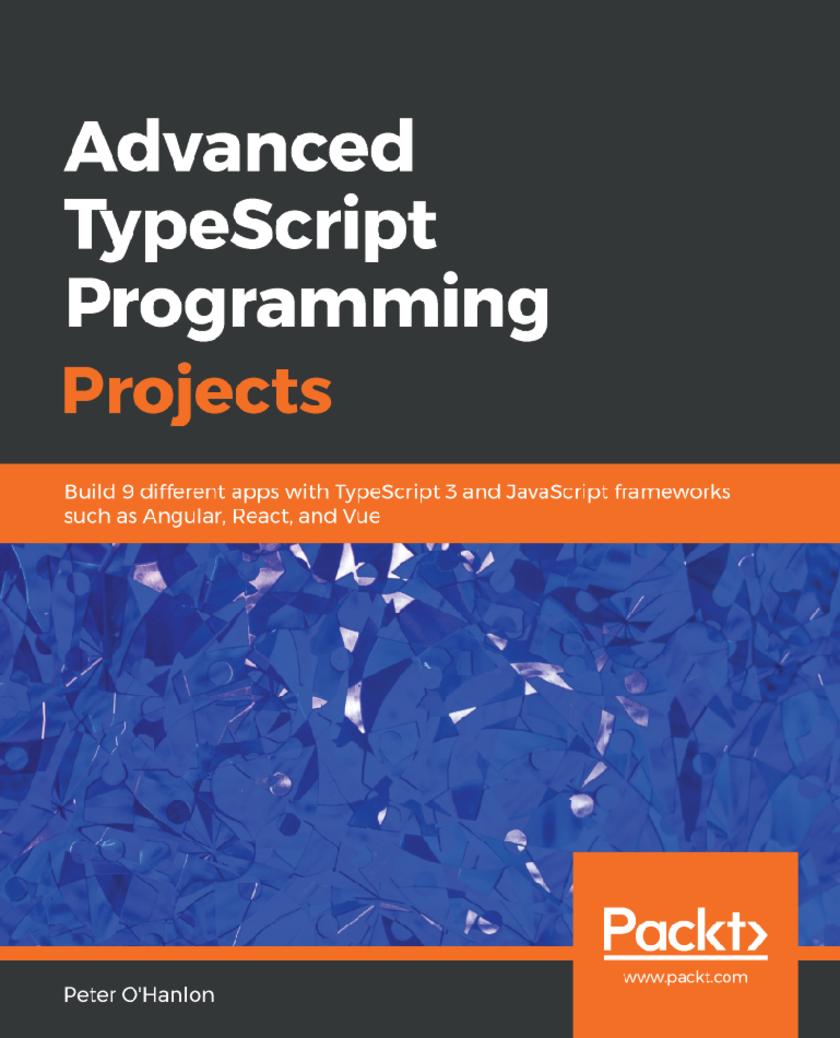
Advanced TypeScript Programming Projects
¥70.84
Gain in-depth knowledge of TypeScript and the latest ECMAScript standards by building robust web applications across different domains Key Features * Apply the cutting-edge features of TypeScript 3.0 to build high-performance, maintainable applications * Learn through practical examples of using TypeScript with popular frameworks, such as Angular and React * Focus on building high-quality applications that are modular, scalable and adaptable Book Description With the demand for ever more complex websites, the need to write robust, standard-compliant JavaScript has never been greater. TypeScript is modern JavaScript with the support of a first-class type system, which makes it simpler to write complex web systems. With this book, you’ll explore core concepts and learn by building a series of websites and TypeScript apps. You’ll start with an introduction to TypeScript features that are often overlooked in other books, before moving on to creating a simple markdown parser. You’ll then explore React and get up to speed with creating a client-side contacts manager. Next, the book will help you discover the Angular framework and use the MEAN stack to create a photo gallery. Later sections will assist you in creating a GraphQL Angular Todo app and then writing a Socket.IO chatroom. The book will also lead you through developing your final Angular project which is a mapping app. As you progress, you’ll gain insights into React with Docker and microservices. You’ll even focus on how to build an image classification program with machine learning using TensorFlow. Finally, you’ll learn to combine TypeScript and C# to create an ASP.NET Core-based music library app. By the end of this book, you’ll be able to confidently use TypeScript 3.0 and different JavaScript frameworks to build high-quality apps. What you will learn * Discover how to use TypeScript to write code using common patterns * Get to grips with using popular frameworks and libraries with TypeScript * Leverage the power of both server and client using TypeScript * Learn how to apply exciting new paradigms such as GraphQL and TensorFlow * Use popular cloud-based authenticated services * Combine TypeScript with C# to create ASP.NET Core applications Who this book is for This book is for programmers and web developers who are familiar with TypeScript and want to put their knowledge to work by building real-world complex applications. Prior experience with any other web framework is not required.
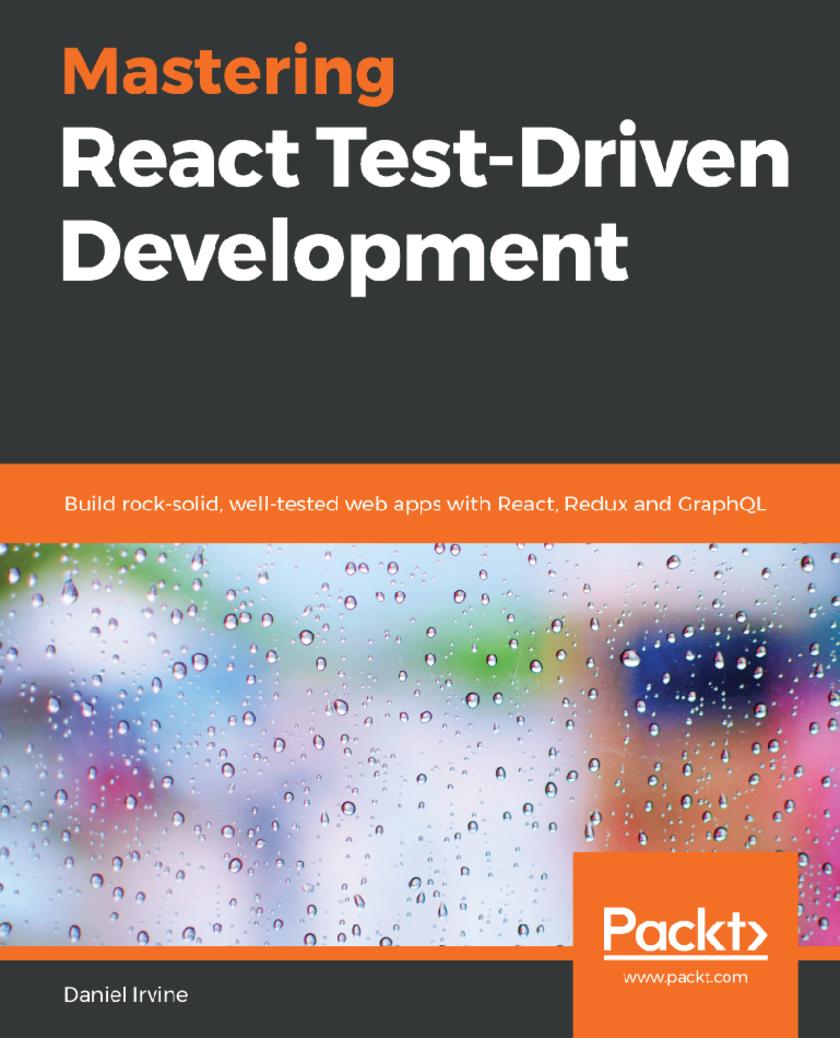
Mastering React Test-Driven Development
¥70.84
Implement TDD for your React applications using Jest, React Router, Redux, and GraphQL/Relay. Learn BDD and end-to-end acceptance testing with CucumberJS and Puppeteer. Key Features * Learn the TDD process using the React framework * Build complex, real-world applications with a pragmatic approach to TDD * Use Cucumber for acceptance and BDD testing, bringing TDD to the wider team Book Description Many programmers are aware of TDD but struggle to apply it beyond basic examples. This book teaches how to build complex, real-world applications using Test-Driven Development (TDD). It takes a first principles approach to the TDD process using plain Jest and includes test-driving the integration of libraries including React Router, Redux, and Relay (GraphQL). Readers will practice systematic refactoring while building out their own test framework, gaining a deep understanding of TDD tools and techniques. They will learn how to test-drive features such as client- and server-side form validation, data filtering and searching, navigation and user workflow, undo/redo, animation, LocalStorage access, WebSocket communication, and querying GraphQL endpoints. The book covers refactoring codebases to use the React Router and Redux libraries. via TDD. Redux is explored in depth, with reducers, middleware, sagas, and connected React components. The book also covers acceptance testing using Cucumber and Puppeteer. The book is fully up to date with React 16.9 and has in-depth coverage of hooks and the ‘act’ test helper. What you will learn * Build test-driven applications using React 16.9+ and Jest * Build complete web applications using a variety of HTML input elements * Understand the different types of test double and when to apply them * Test-drive the Integration of libraries such as React Router, Redux, and Relay (GraphQL) * Learn when to be pragmatic and how to apply TDD shortcuts * Test-drive interaction with browser APIs including fetch and WebSockets * Use Cucumber.js and Puppeteer to build BDD-style acceptance tests for your applications * Build and test async Redux code using redux-saga and expect-redux Who this book is for The target audience for this book is JavaScript developers who are looking to implement test-driven and behavior-driven approaches for their React applications.
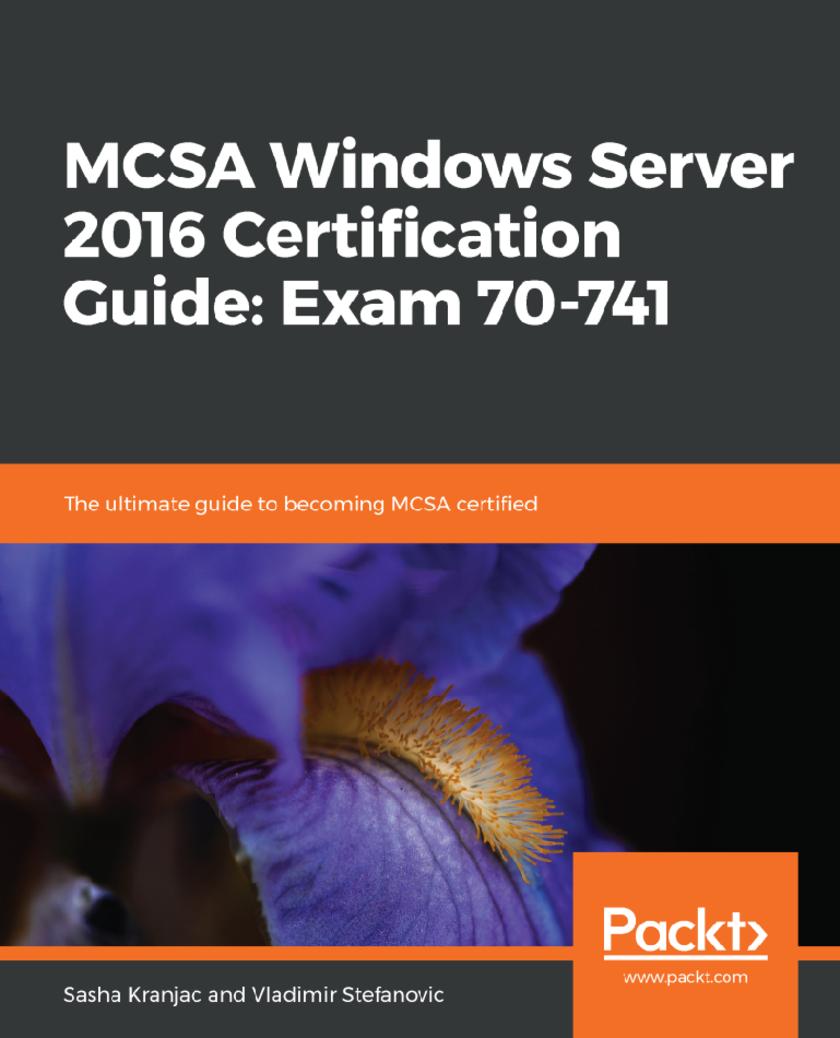
MCSA Windows Server 2016 Certification Guide: Exam 70-741
¥70.84
A comprehensive certification guide that will help you prepare for the exam from day one of your preparation journey Key Features * Get well-versed with the nitty-gritty of Windows server 2016 * A practical guide towards installing, upgrading, and migrating to Windows Server 2016 * Enhance your skills with practice questions and mock tests Book Description MCSA: Windows Server 2016 is one of the most sought-after certifications for IT professionals which include working with Windows Server and performing administrative tasks around it. It targets Exam 70-740, Exam 70-741, Exam 70-742 and Exam 70-743 certifications and the demand for these certifications is increasingly high. This book will start with installation, upgrade and migration to Windows Server 2016, cover imaging and deployment and proceed with High Availability and Clustering. Then we will deep dive into fundamental concepts like Core networking, DNS, DHCP, Storage and proceed to Hyper-V, Network Access and Distributed File System. It will also explain Advanced Networking topics such as Software Defined Networking and High-Performance Networking. Furthermore, it will also cover advanced Identity topics in Windows Server 2016 such as Active Directory installation and configuration, Group Policy, Active Directory Certificate Services, and Active Directory Federation Services and Rights Management. Towards the end of this book, test questions and mock preparation items will help in preparing for the certifications with more ease. By the end of this book, you will be able to complete MCSA: Windows Server 2016 certification with more confidence. What you will learn * Prepare for exam 70-741 Networking with Windows Server 2016 * Learn to apply the technology to real-world examples * Learn core networking, name resolution and connectivity technologies in Windows Server 2016. * Get prepared for exam 70-742 Identity with Windows Server 2016 * Get ways to clear the exam 70-743 Upgrading Your Skills to MCSA: Windows Server 2016 * Practice critical skills and test your knowledge of the objectives of all three MCSA exams Who this book is for This book is targeted towards system administrators or windows server administrators who are interested in clearing the MCSA certification with ease.
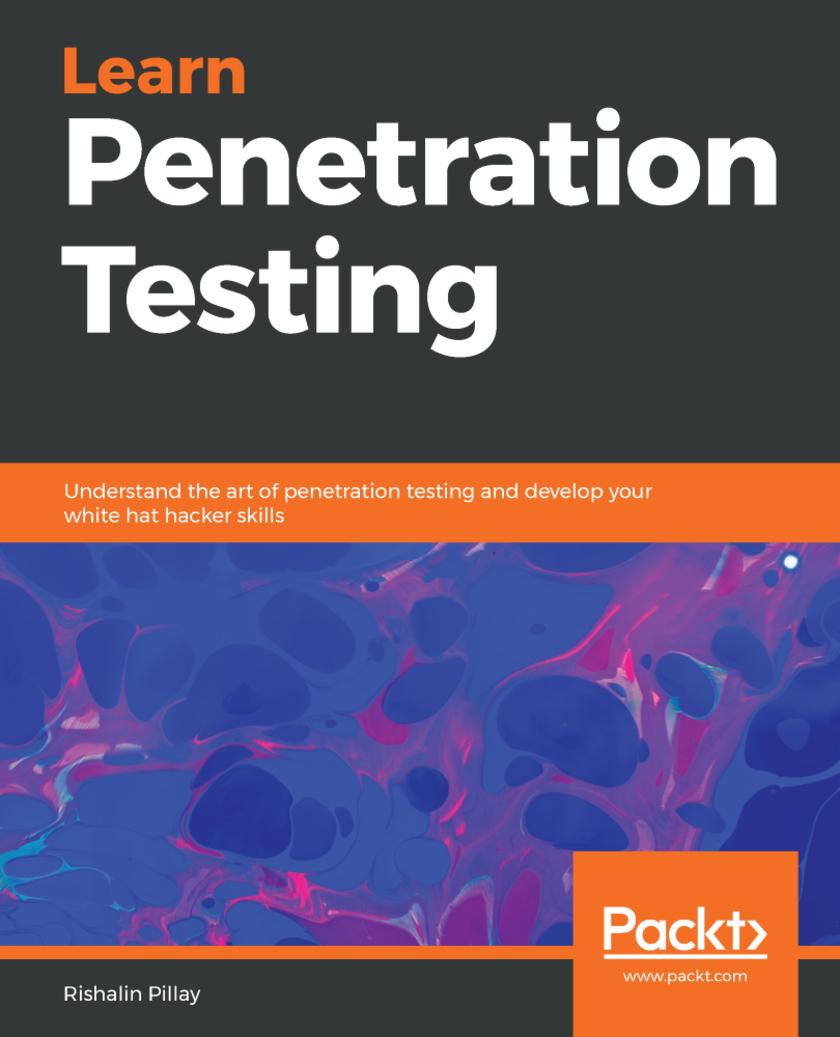
Learn Penetration Testing
¥70.84
Get up to speed with various penetration testing techniques and resolve security threats of varying complexity Key Features * Enhance your penetration testing skills to tackle security threats * Learn to gather information, find vulnerabilities, and exploit enterprise defenses * Navigate secured systems with the most up-to-date version of Kali Linux (2019.1) and Metasploit (5.0.0) Book Description Sending information via the internet is not entirely private, as evidenced by the rise in hacking, malware attacks, and security threats. With the help of this book, you'll learn crucial penetration testing techniques to help you evaluate enterprise defenses. You'll start by understanding each stage of pentesting and deploying target virtual machines, including Linux and Windows. Next, the book will guide you through performing intermediate penetration testing in a controlled environment. With the help of practical use cases, you'll also be able to implement your learning in real-world scenarios. By studying everything from setting up your lab, information gathering and password attacks, through to social engineering and post exploitation, you'll be able to successfully overcome security threats. The book will even help you leverage the best tools, such as Kali Linux, Metasploit, Burp Suite, and other open source pentesting tools to perform these techniques. Toward the later chapters, you'll focus on best practices to quickly resolve security threats. By the end of this book, you'll be well versed with various penetration testing techniques so as to be able to tackle security threats effectively What you will learn * Perform entry-level penetration tests by learning various concepts and techniques * Understand both common and not-so-common vulnerabilities from an attacker's perspective * Get familiar with intermediate attack methods that can be used in real-world scenarios * Understand how vulnerabilities are created by developers and how to fix some of them at source code level * Become well versed with basic tools for ethical hacking purposes * Exploit known vulnerable services with tools such as Metasploit Who this book is for If you’re just getting started with penetration testing and want to explore various security domains, this book is for you. Security professionals, network engineers, and amateur ethical hackers will also find this book useful. Prior knowledge of penetration testing and ethical hacking is not necessary.
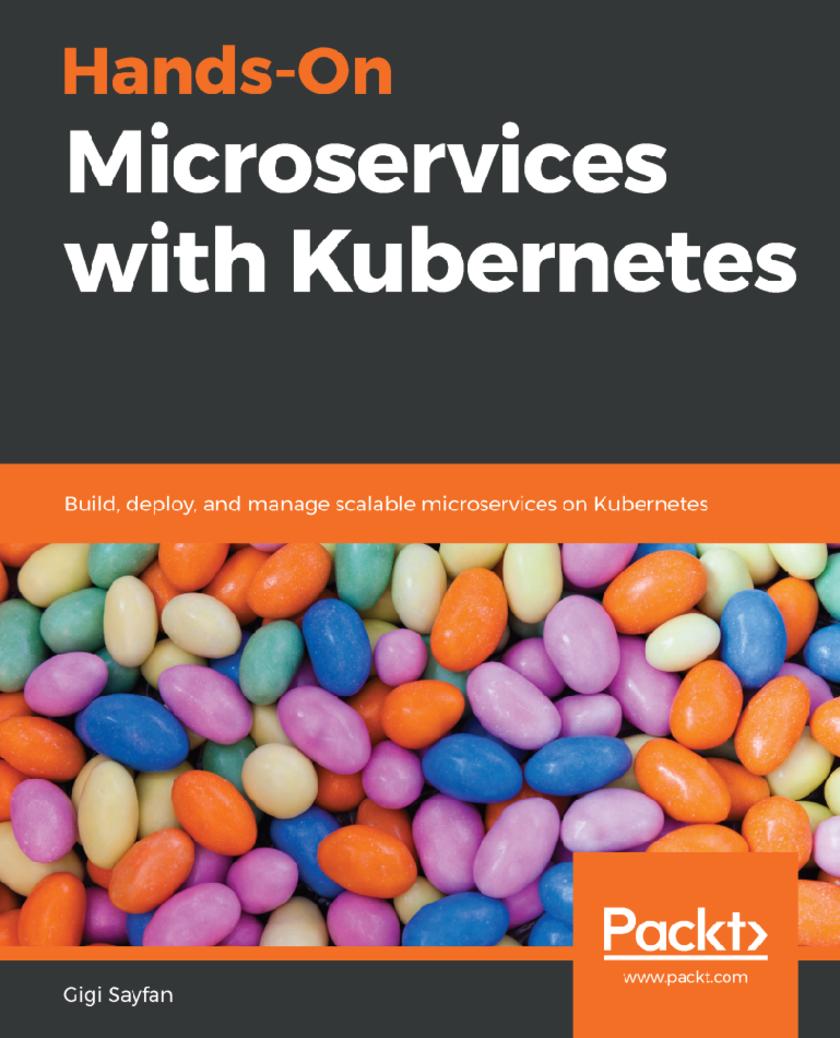
Hands-On Microservices with Kubernetes
¥70.84
Enhance your skills in building scalable infrastructure for your cloud-based applications Key Features * Learn to design a scalable architecture by building continuous integration (CI) pipelines with Kubernetes * Get an in-depth understanding of role-based access control (RBAC), continuous deployment (CD), and observability * Monitor a Kubernetes cluster with Prometheus and Grafana Book Description Kubernetes is among the most popular open-source platforms for automating the deployment, scaling, and operations of application containers across clusters of hosts, providing a container-centric infrastructure. Hands-On Microservices with Kubernetes starts by providing you with in-depth insights into the synergy between Kubernetes and microservices. You will learn how to use Delinkcious, which will serve as a live lab throughout the book to help you understand microservices and Kubernetes concepts in the context of a real-world application. Next, you will get up to speed with setting up a CI/CD pipeline and configuring microservices using Kubernetes ConfigMaps. As you cover later chapters, you will gain hands-on experience in securing microservices, and implementing REST, gRPC APIs, and a Delinkcious data store. In addition to this, you’ll explore the Nuclio project, run a serverless task on Kubernetes, and manage and implement data-intensive tests. Toward the concluding chapters, you’ll deploy microservices on Kubernetes and learn to maintain a well-monitored system. Finally, you’ll discover the importance of service meshes and how to incorporate Istio into the Delinkcious cluster. By the end of this book, you’ll have gained the skills you need to implement microservices on Kubernetes with the help of effective tools and best practices. What you will learn * Understand the synergy between Kubernetes and microservices * Create a complete CI/CD pipeline for your microservices on Kubernetes * Develop microservices on Kubernetes with the Go kit framework using best practices * Manage and monitor your system using Kubernetes and open-source tools * Expose your services through REST and gRPC APIs * Implement and deploy serverless functions as a service * Externalize authentication, authorization and traffic shaping using a service mesh * Run a Kubernetes cluster in the cloud on Google Kubernetes Engine Who this book is for This book is for developers, DevOps engineers, or anyone who wants to develop large-scale microservice-based systems on top of Kubernetes. If you are looking to use Kubernetes on live production projects or want to migrate existing systems to a modern containerized microservices system, then this book is for you. Coding skills, together with some knowledge of Docker, Kubernetes, and cloud concepts will be useful.
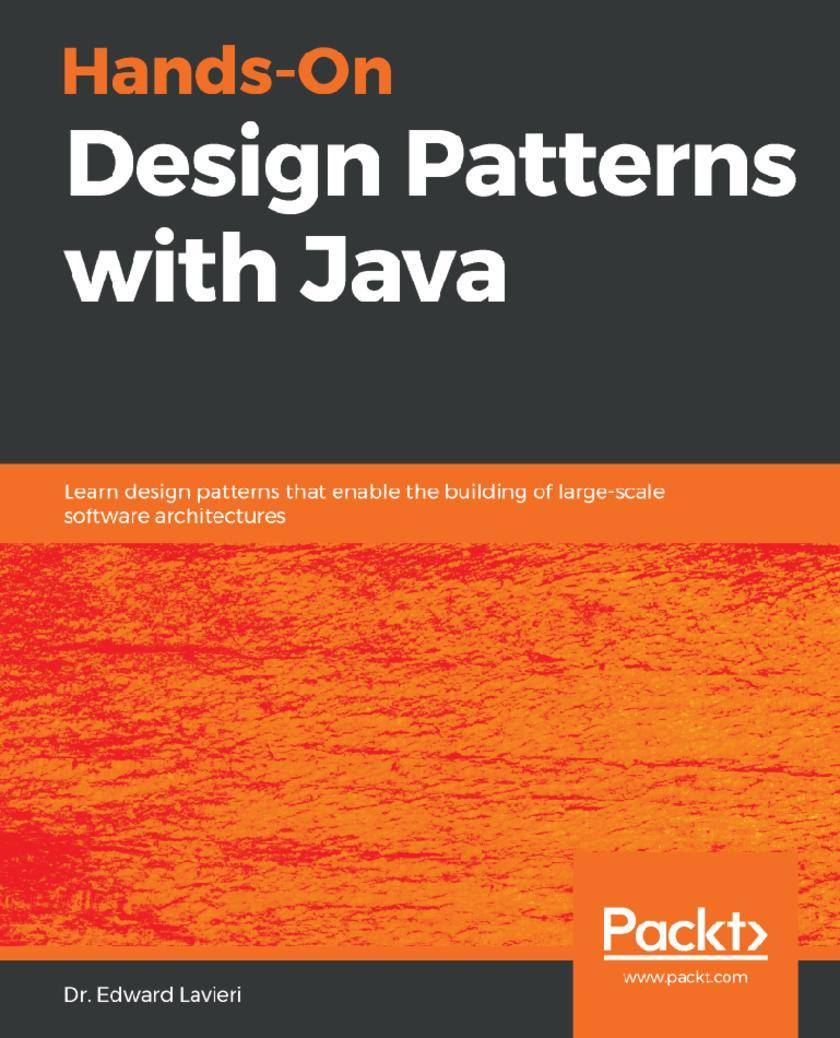
Hands-On Design Patterns with Java
¥70.84
Understand Gang of Four, architectural, functional, and reactive design patterns and how to implement them on modern Java platforms, such as Java 12 and beyond Key Features * Learn OOP, functional, and reactive patterns for creating readable and maintainable code * Explore architectural patterns and practices for building scalable and reliable applications * Tackle all kinds of performance-related issues and streamline development using design patterns Book Description Java design patterns are reusable and proven solutions to software design problems. This book covers over 60 battle-tested design patterns used by developers to create functional, reusable, and flexible software. Hands-On Design Patterns with Java starts with an introduction to the Unified Modeling Language (UML), and delves into class and object diagrams with the help of detailed examples. You'll study concepts and approaches to object-oriented programming (OOP) and OOP design patterns to build robust applications. As you advance, you'll explore the categories of GOF design patterns, such as behavioral, creational, and structural, that help you improve code readability and enable large-scale reuse of software. You’ll also discover how to work effectively with microservices and serverless architectures by using cloud design patterns, each of which is thoroughly explained and accompanied by real-world programming solutions. By the end of the book, you’ll be able to speed up your software development process using the right design patterns, and you’ll be comfortable working on scalable and maintainable projects of any size. What you will learn * Understand the significance of design patterns for software engineering * Visualize software design with UML diagrams * Strengthen your understanding of OOP to create reusable software systems * Discover GOF design patterns to develop scalable applications * Examine programming challenges and the design patterns that solve them * Explore architectural patterns for microservices and cloud development Who this book is for If you are a developer who wants to learn how to write clear, concise, and effective code for building production-ready applications, this book is for you. Familiarity with the fundamentals of Java is assumed.
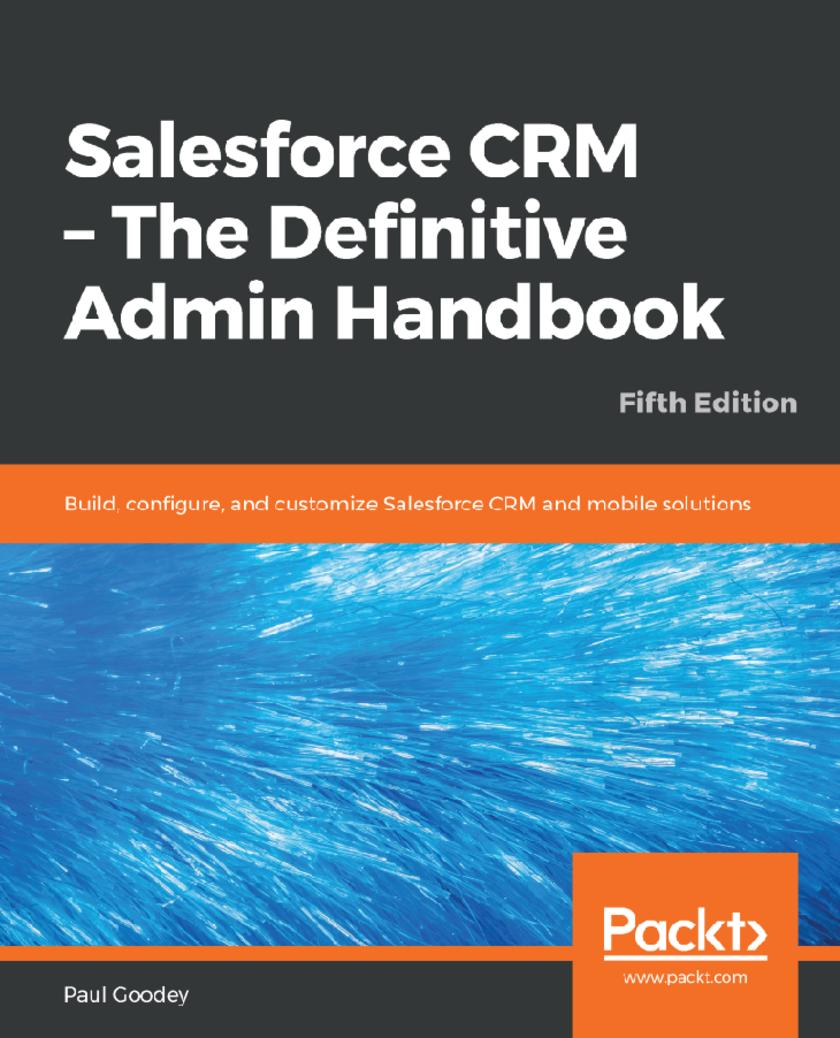
Salesforce CRM - The Definitive Admin Handbook
¥70.84
A definitive guide covering all the core concepts necessary to pass the Salesforce Administrator Certification exam Key Features * Understand critical design considerations for setting up Salesforce CRM * Facilitate and manage the transition from Salesforce Classic to Lightning Experience * Learn key functions of application security to manage user profiles and data Book Description Salesforce’s winter ’19 release offers a host of new features for CRM designed to meet your sales and marketing requirements. With this comprehensive guide to implementing Salesforce CRM, administrators of all levels can easily get a thorough understanding of the platform. This Salesforce handbook begins by guiding you in setting up users and security and then progresses to configuration, data management, and data analytics. You’ll discover process automation and approval mechanisms, while also exploring the functional areas of Sales Cloud, Service Cloud, Marketing Cloud, and Salesforce Chatter. This book covers Salesforce CRM system administration in a practical way, and it’ll serve as an invaluable reference for both new administrators and experienced professionals. Furthermore, you’ll also delve into Salesforce mobile apps and mobile administration, along with Salesforce Adoption Manager. You’ll gain insights into Lightning Experience, Salesforce's new app, and learn how its modern design and sleek interface helps you to build customizable components. Finally, we'll see how the two versions compare and help manage the transition from Salesforce Classic to Lightning Experience.?? By the end of the book, you will have mastered the techniques to configure and control various user interface features in Salesforce CRM. What you will learn * Configure a variety of user interface features in Salesforce CRM * Understand the capabilities of the Salesforce CRM sharing model * Explore Einstein Analytics - Salesforce's new wave of advanced reporting * Get to grips with the Lightning Process Builder workflow * Set up user profiles, security, and login access mechanisms * Find out how Apex and Visualforce coding can be used in Salesforce CRM * Manage the transition from Salesforce Classic to Lightning Experience * Implement data manipulation features to apply best practices in data management Who this book is for This book is for administrators who want to develop and strengthen their Salesforce CRM skills in the areas of configuration and system management. Whether you are a new or experienced professional, this book will enhance your knowledge and understanding of Salesforce CRM features.
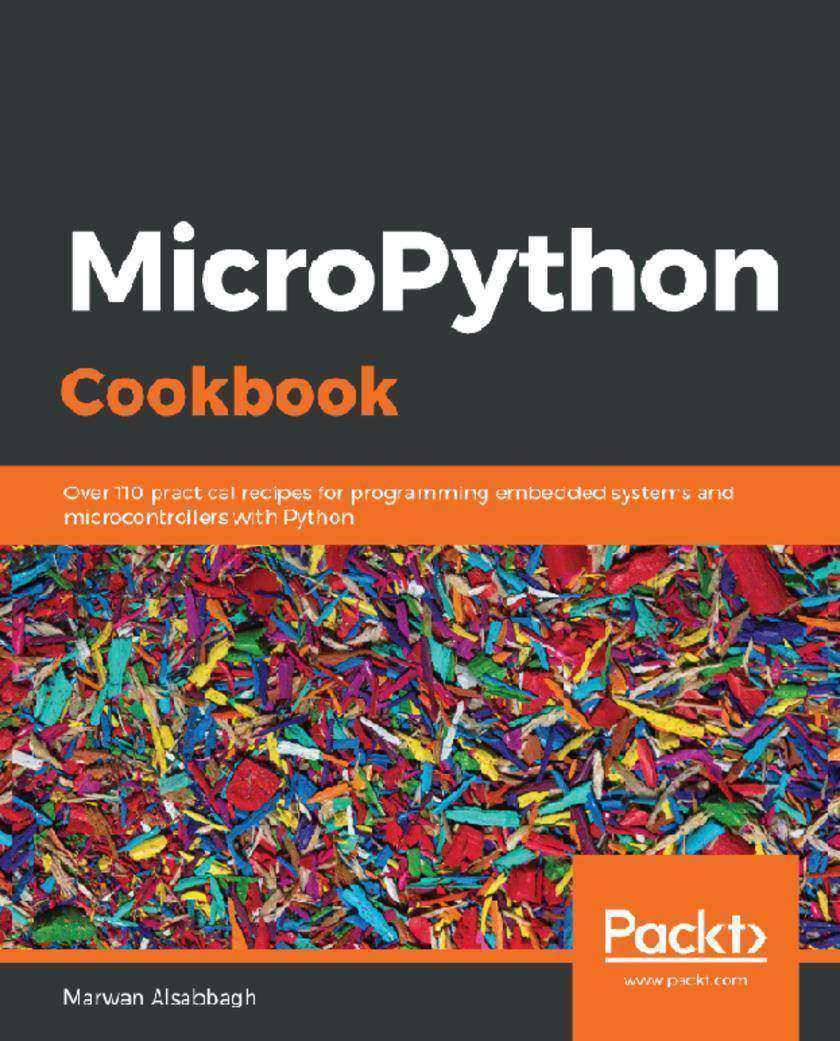
MicroPython Cookbook
¥70.84
Learn how you can control LEDs, make music, and read sensor data using popular microcontrollers such as Adafruit Circuit Playground, ESP8266, and the BBC micro:bit Key Features * Load and execute your first program with MicroPython * Program an IoT device to retrieve weather data using a RESTful API * Get to grips with integrating hardware, programming, and networking concepts with MicroPython Book Description MicroPython is an open source implementation of Python 3 that runs in embedded environments. With MicroPython, you can write clean and simple Python code to control hardware instead of using complex low-level languages like C and C++. This book guides you through all the major applications of the MicroPython platform to build and program projects that use microcontrollers. The MicroPython book covers recipes that’ll help you experiment with the programming environment and hardware programmed in MicroPython. You’ll find tips and techniques for building a variety of objects and prototypes that can sense and respond to touch, sound, position, heat, and light. This book will take you through the uses of MicroPython with a variety of popular input devices and sensors. You’ll learn techniques for handling time delays and sensor readings, and apply advanced coding techniques to create complex projects. As you advance, you’ll get to deal with Internet of Things (IoT) devices and integration with other online web services. Furthermore, you'll also use MicroPython to make music with bananas and create portable multiplayer video games that incorporate sound and light animations into the game play. By the end of the book, you'll have mastered tips and tricks to troubleshoot your development problems and push your MicroPython project to the next level! What you will learn * Execute code without any need for compiling or uploading using REPL (read-evaluate-print-loop) * Program and control LED matrix and NeoPixel drivers to display patterns and colors * Build projects that make use of light, temperature, and touch sensors * Configure devices to create Wi-Fi access points and use network modules to scan and connect to existing networks * Use Pulse Width Modulation to control DC motors and servos * Build an IoT device to display live weather data from the Internet at the touch of a button Who this book is for If you want to build and program projects that use microcontrollers, this book will offer you dozens of recipes to guide you through all the major applications of the MicroPython platform. Although no knowledge of MicroPython or microcontrollers is expected, a general understanding of Python is necessary to get started with this book.
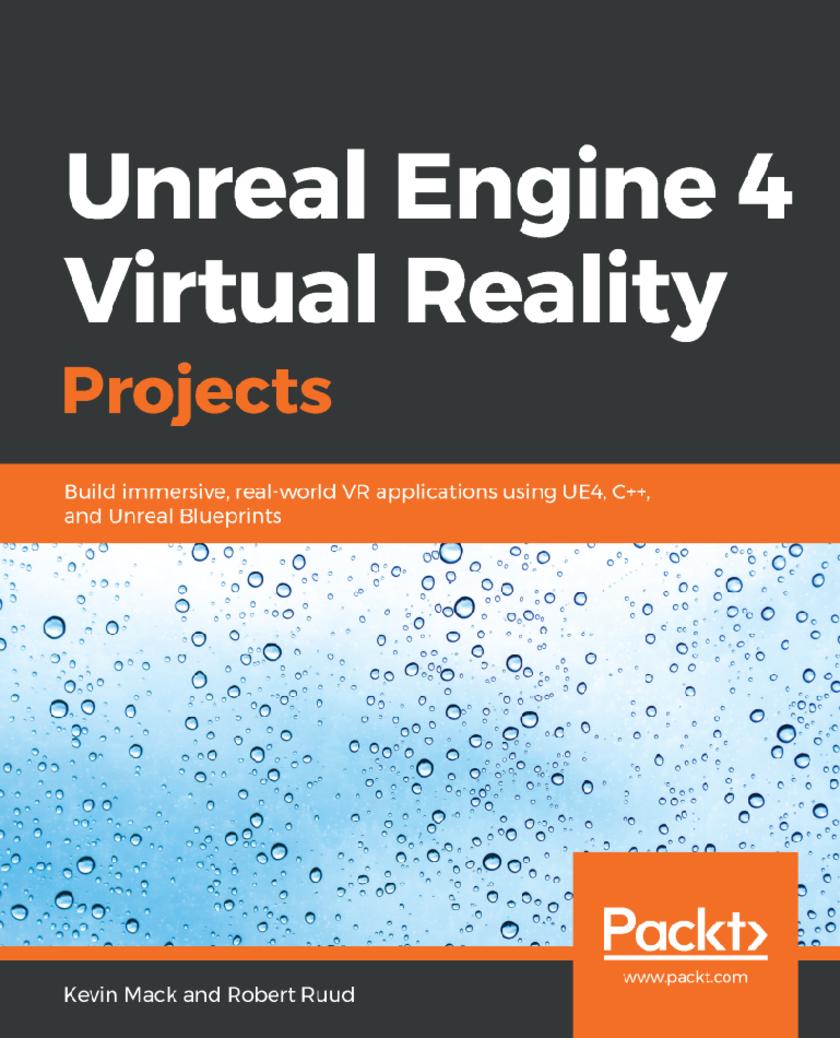
Unreal Engine 4 Virtual Reality Projects
¥70.84
Learn to design and build Virtual Reality experiences, applications, and games in Unreal Engine 4 through a series of practical, hands-on projects that teach you to create controllable avatars, user interfaces, and more. Key Features * Deploy your virtual reality applications on the latest Oculus Go and Samsung Gear * Build real-world applications such as 3D UIs, mini games, and 360° media player applications using Unreal Engine 4 * Master multiplayer networking and build rich multi-user VR experiences Book Description Unreal Engine 4 (UE4) is a powerful tool for developing VR games and applications. With its visual scripting language, Blueprint, and built-in support for all major VR headsets, it's a perfect tool for designers, artists, and engineers to realize their visions in VR. This book will guide you step-by-step through a series of projects that teach essential concepts and techniques for VR development in UE4. You will begin by learning how to think about (and design for) VR and then proceed to set up a development environment. A series of practical projects follows, taking you through essential VR concepts. Through these exercises, you'll learn how to set up UE4 projects that run effectively in VR, how to build player locomotion schemes, and how to use hand controllers to interact with the world. You'll then move on to create user interfaces in 3D space, use the editor's VR mode to build environments directly in VR, and profile/optimize worlds you've built. Finally, you'll explore more advanced topics, such as displaying stereo media in VR, networking in Unreal, and using plugins to extend the engine. Throughout, this book focuses on creating a deeper understanding of why the relevant tools and techniques work as they do, so you can use the techniques and concepts learned here as a springboard for further learning and exploration in VR. What you will learn * Understand design principles and concepts for building VR applications * Set up your development environment with Unreal Blueprints and C++ * Create a player character with several locomotion schemes * Evaluate and solve performance problems in VR to maintain high frame rates * Display mono and stereo videos in VR * Extend Unreal Engine's capabilities using various plugins Who this book is for This book is for anyone interested in learning to develop Virtual Reality games and applications using UE4. Developers new to UE4 will benefit from hands-on projects that guide readers through clearly-explained steps, while both new and experienced developers will learn crucial principles and techniques for VR development in UE4.
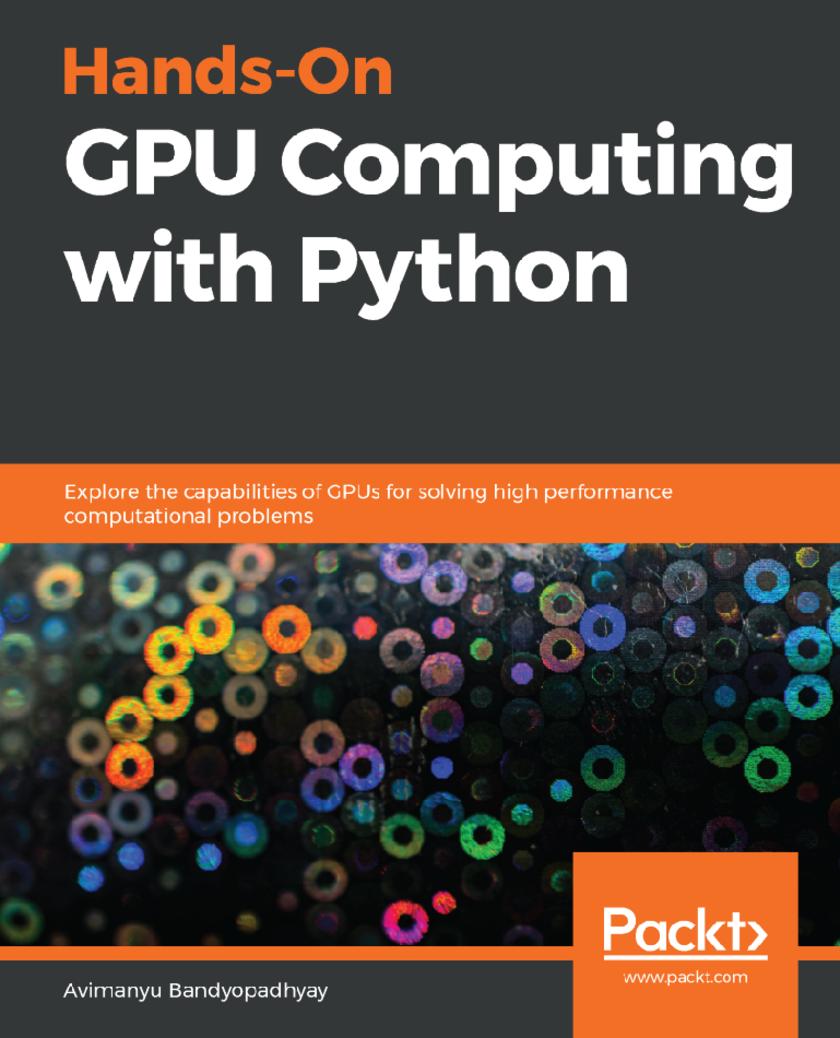
Hands-On GPU Computing with Python
¥70.84
Explore GPU-enabled programmable environment for machine learning, scientific applications, and gaming using PuCUDA, PyOpenGL, and Anaconda Accelerate Key Features * Understand effective synchronization strategies for faster processing using GPUs * Write parallel processing scripts with PyCuda and PyOpenCL * Learn to use the CUDA libraries like CuDNN for deep learning on GPUs Book Description GPUs are proving to be excellent general purpose-parallel computing solutions for high performance tasks such as deep learning and scientific computing. This book will be your guide to getting started with GPU computing. It will start with introducing GPU computing and explain the architecture and programming models for GPUs. You will learn, by example, how to perform GPU programming with Python, and you’ll look at using integrations such as PyCUDA, PyOpenCL, CuPy and Numba with Anaconda for various tasks such as machine learning and data mining. Going further, you will get to grips with GPU work flows, management, and deployment using modern containerization solutions. Toward the end of the book, you will get familiar with the principles of distributed computing for training machine learning models and enhancing efficiency and performance. By the end of this book, you will be able to set up a GPU ecosystem for running complex applications and data models that demand great processing capabilities, and be able to efficiently manage memory to compute your application effectively and quickly. What you will learn * Utilize Python libraries and frameworks for GPU acceleration * Set up a GPU-enabled programmable machine learning environment on your system with Anaconda * Deploy your machine learning system on cloud containers with illustrated examples * Explore PyCUDA and PyOpenCL and compare them with platforms such as CUDA, OpenCL and ROCm. * Perform data mining tasks with machine learning models on GPUs * Extend your knowledge of GPU computing in scientific applications Who this book is for Data Scientist, Machine Learning enthusiasts and professionals who wants to get started with GPU computation and perform the complex tasks with low-latency. Intermediate knowledge of Python programming is assumed.
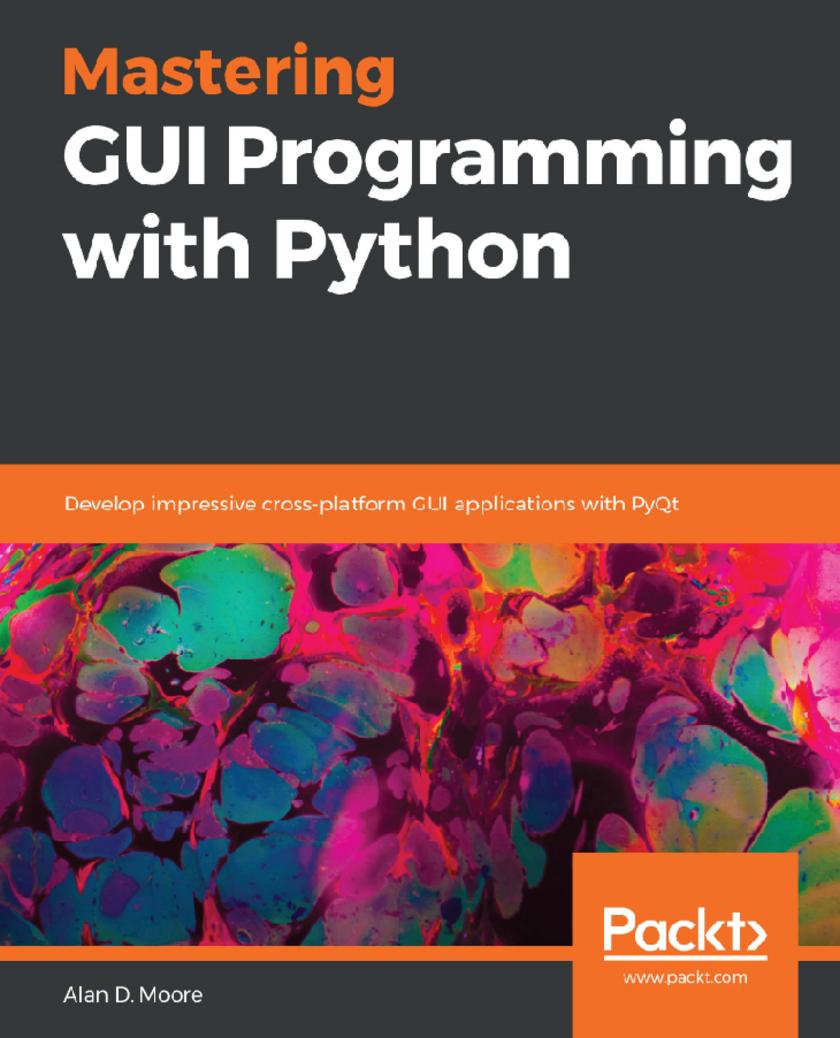
Mastering GUI Programming with Python
¥70.84
An advanced guide to creating powerful high-performance GUIs for modern, media-rich applications in various domains such as business and game development Key Features * Gain comprehensive knowledge of Python GUI development using PyQt 5.12 * Explore advanced topics including multithreaded programming, 3D animation, and SQL databases * Build cross-platform GUIs for Windows, macOS, Linux, and Raspberry Pi Book Description PyQt5 has long been the most powerful and comprehensive GUI framework available for Python, yet there is a lack of cohesive resources available to teach Python programmers how to use it. This book aims to remedy the problem by providing comprehensive coverage of GUI development with PyQt5. You will get started with an introduction to PyQt5, before going on to develop stunning GUIs with modern features. You will then learn how to build forms using QWidgets and learn about important aspects of GUI development such as layouts, size policies, and event-driven programming. Moving ahead, you’ll discover PyQt5’s most powerful features through chapters on audio-visual programming with QtMultimedia, database-driven software with QtSQL, and web browsing with QtWebEngine. Next, in-depth coverage of multithreading and asynchronous programming will help you run tasks asynchronously and build high-concurrency processes with ease. In later chapters, you’ll gain insights into QOpenGLWidget, along with mastering techniques for creating 2D graphics with QPainter. You’ll also explore PyQt on a Raspberry Pi and interface it with remote systems using QtNetwork. Finally, you will learn how to distribute your applications using setuptools and PyInstaller. By the end of this book, you will have the skills you need to develop robust GUI applications using PyQt. What you will learn * Get to grips with the inner workings of PyQt5 * Learn how elements in a GUI application communicate with signals and slots * Learn techniques for styling an application * Explore database-driven applications with the QtSQL module * Create 2D graphics with QPainter * Delve into 3D graphics with QOpenGLWidget * Build network and web-aware applications with QtNetwork and QtWebEngine Who this book is for This book is for programmers who want to create attractive, functional, and powerful GUIs using the Python language. You’ll also find this book useful if you are a student, professional, or anyone who wants to start exploring GUIs or take your skills to the next level. Although prior knowledge of the Python language is assumed, experience with PyQt, Qt, or GUI programming is not required.
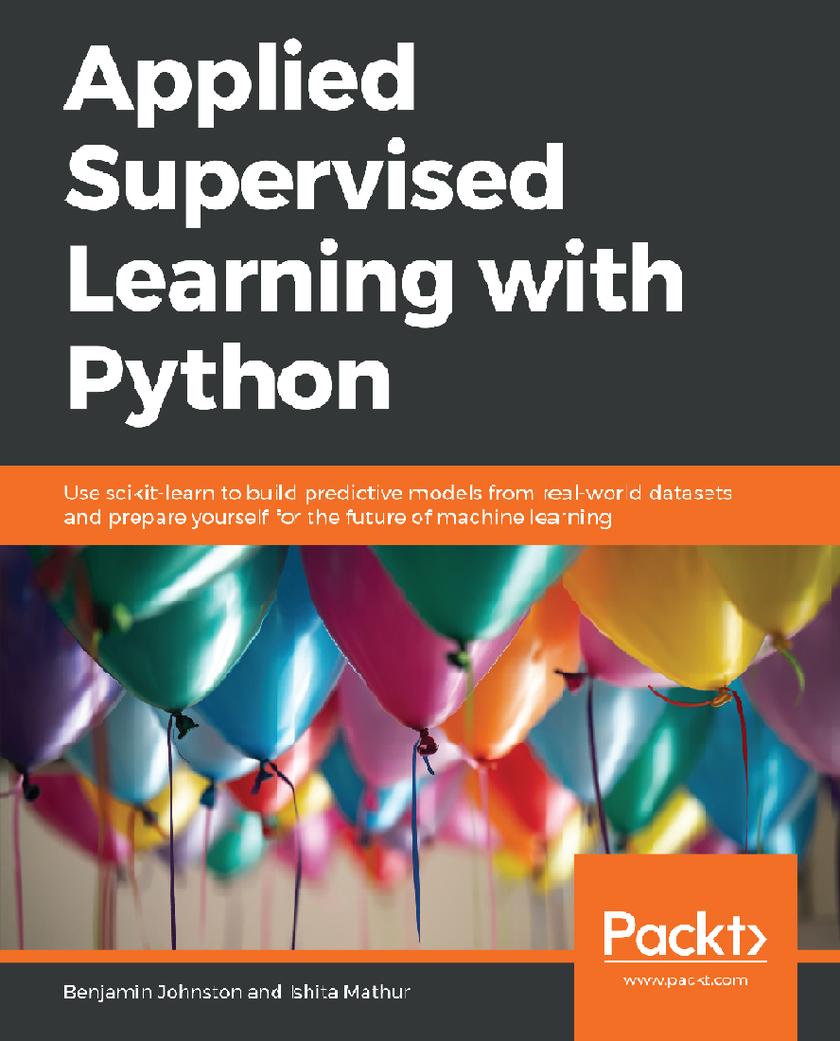
Applied Supervised Learning with Python
¥70.84
Explore the exciting world of machine learning with the fastest growing technology in the world Key Features * Understand various machine learning concepts with real-world examples * Implement a supervised machine learning pipeline from data ingestion to validation * Gain insights into how you can use machine learning in everyday life Book Description Machine learning—the ability of a machine to give right answers based on input data—has revolutionized the way we do business. Applied Supervised Learning with Python provides a rich understanding of how you can apply machine learning techniques in your data science projects using Python. You'll explore Jupyter Notebooks, the technology used commonly in academic and commercial circles with in-line code running support. With the help of fun examples, you'll gain experience working on the Python machine learning toolkit—from performing basic data cleaning and processing to working with a range of regression and classification algorithms. Once you’ve grasped the basics, you'll learn how to build and train your own models using advanced techniques such as decision trees, ensemble modeling, validation, and error metrics. You'll also learn data visualization techniques using powerful Python libraries such as Matplotlib and Seaborn. This book also covers ensemble modeling and random forest classifiers along with other methods for combining results from multiple models, and concludes by delving into cross-validation to test your algorithm and check how well the model works on unseen data. By the end of this book, you'll be equipped to not only work with machine learning algorithms, but also be able to create some of your own! What you will learn * Understand the concept of supervised learning and its applications * Implement common supervised learning algorithms using machine learning Python libraries * Validate models using the k-fold technique * Build your models with decision trees to get results effortlessly * Use ensemble modeling techniques to improve the performance of your model * Apply a variety of metrics to compare machine learning models Who this book is for Applied Supervised Learning with Python is for you if you want to gain a solid understanding of machine learning using Python. It'll help if you to have some experience in any functional or object-oriented language and a basic understanding of Python libraries and expressions, such as arrays and dictionaries.
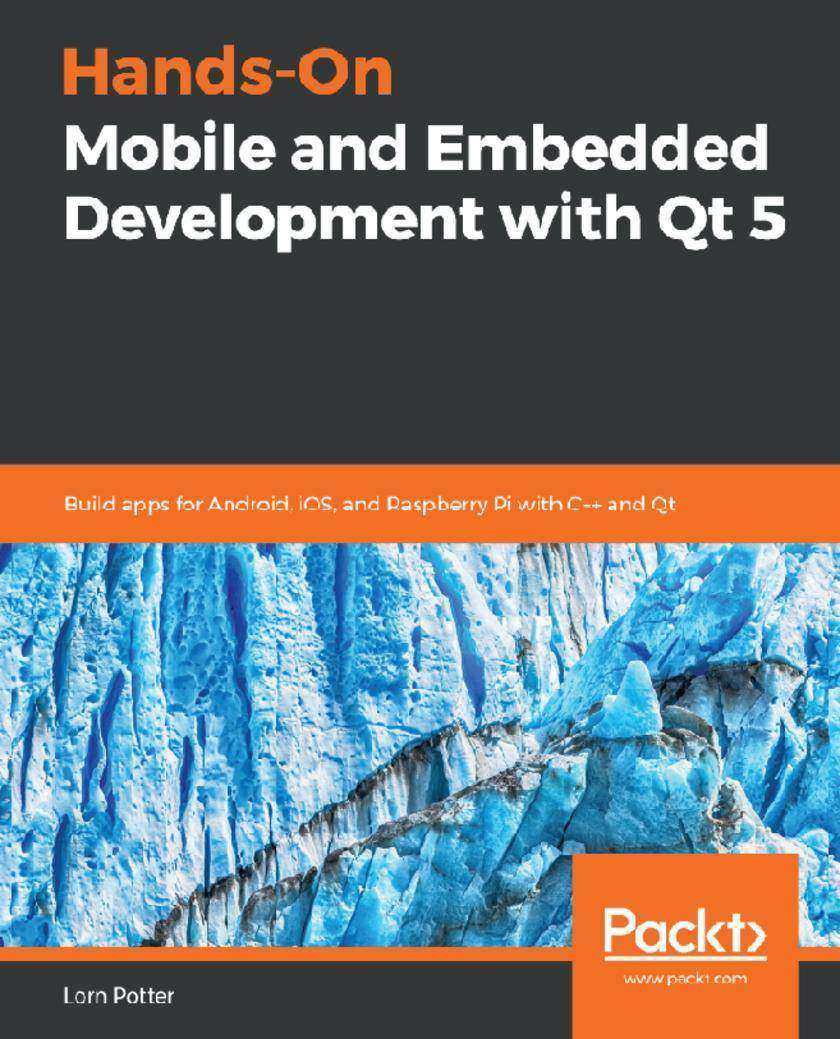
Hands-On Mobile and Embedded Development with Qt 5
¥70.84
Explore Qt framework and APIs for building cross-platform applications for mobile devices, embedded systems, and IoT Key Features * Build cross-platform applications and deploy them across mobile and connected devices * Design 2D and 3D UIs for embedded systems using Yocto and Qt Creator * Build machine to machine automation solution using QtSensors, QtMQTT, and QtWebSockets Book Description Qt is a world-class framework, helping you to develop rich graphical user interfaces (GUIs) and multi-platform applications that run on all major desktop platforms and most mobile or embedded platforms. The framework helps you connect the dots across platforms and between online and physical experience. This book will help you leverage the fully-featured Qt framework and its modular cross-platform library classes and intuitive APIs to develop applications for mobile, IoT, and industrial embedded systems. Considerations such as screen size, device orientation changes, and small memory will be discussed. We will focus on various core aspects of embedded and mobile systems, such as connectivity, networking, and sensors; there is no IoT without sensors. You will learn how to quickly design a flexible, fast, and responsive UI that looks great. Going further, you will implement different elements in a matter of minutes and synchronize the UI elements with the 3D assets with high precision. You will learn how to create high-performance embedded systems with 3D/2D user interfaces, and deploy and test on your target hardware. The book will explore several new features, including Qt for WebAssembly. At the end of this book, you will learn about creating a full software stack for embedded Linux systems using Yocto and Boot to Qt for Device Creation. What you will learn * Explore the latest features of Qt, such as preview for Qt for Python and Qt for WebAssembly * Create fluid UIs with a dynamic layout for different sized screens * Deploy embedded applications on Linux systems using Yocto * Design Qt APIs for building applications for embedded and mobile devices * Utilize connectivity for networked and machine automated applications * Discover effective techniques to apply graphical effects using Qt Quick apps Who this book is for The book is ideal for mobile developers, embedded systems engineers and enthusiasts who are interested in building cross-platform applications with Qt. Prior knowledge of C++ is required.




 购物车
购物车 个人中心
个人中心



